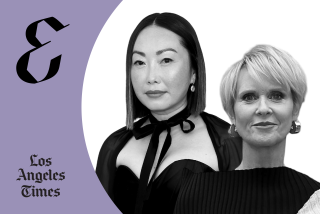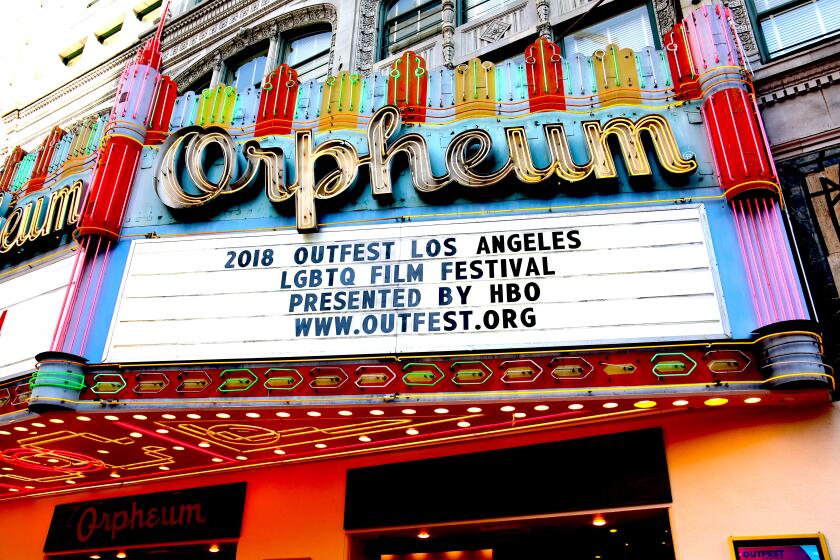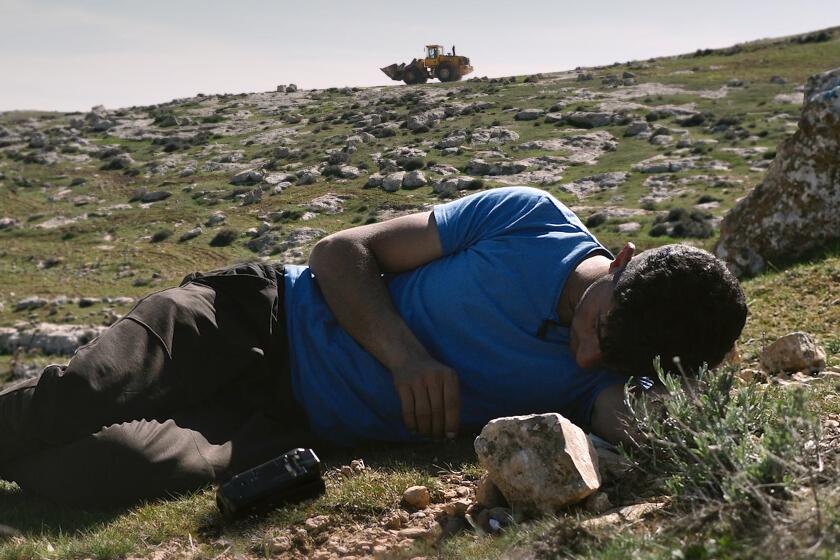Before playing Judy Garland, Renée Zellweger was torn about contacting Liza Minnelli
Renée Zellweger knows what it’s like to be a public target. At 50, she’s lived half of her life in the spotlight, weathering tabloid stories about her weight, plastic surgery and high-profile relationships with men like Jim Carrey and Kenny Chesney.
So when it came to playing Judy Garland — a performer whose struggle with substance abuse, financial troubles and custody battles were all grist for the mill — little surprised the actress. Not even learning that in the last years of Garland’s life, British audiences literally pelted her with bread rolls when they were displeased with her performance.
“It wasn’t shocking because I’ve never known any different,” Zellweger says. “It might have been a little less direct then than it can be today, where you will be unapologetically asked about the nature or health of your personal, intimate relationships and the private choices you make. I didn’t tear through magazines about Judy Garland or anyone else growing up, looking for something that was salacious. So I don’t understand the appetite for it, but there wouldn’t be a need for providing that information if there wasn’t a desire.”
In Rupert Goold’s “Judy,” which opens in theaters Sept. 27 after hitting the festival circuit in Telluride and Toronto, Zellweger plays Garland in the final months of the performer’s life. It’s 1968 and the “Wizard of Oz” star at 46 is no longer America’s sweetheart. Millions of dollars in debt, she’s been forced overseas and away from her children to London, the only place she can find a paying gig. But she’s drinking heavily and can’t stop popping the pills that Hollywood studios forced on her during her adolescence. Under pressure, she turns up late or out-of-tune during her sold-out run at the cabaret club Talk of the Town, inviting scorn from critics and ticket holders.
The film is based on playwright Peter Quilter’s “End of the Rainbow,” a musical stage production that opened in 2005, played London’s West End and eventually went to Broadway. Tom Edge (“The Crown,” “Lovesick”), who was asked to adapt the play for the big screen, wasn’t particularly familiar with the show — or Garland herself — before signing on to “Judy.” So he began by scouring YouTube, hunting for videos of the legend in the late 1960s. He was most moved by the interview she gave to Barbara Walters in 1967, during which she sits beside two of her children, Lorna and Joey Luft.
“I was really kind of taken with her,” Edge recalls. “Beyond [‘Judy at] Carnegie Hall’ [the 1961 record for which she became the first woman to win the Grammy for album of the year] and the pill-popping, the woman on the sofa seemed incredibly smart and vulnerable. You could see in the space of the same paragraph, she would pivot from telling showbiz anecdotes to being more vulnerable and wary. There was a deep anger, irritation and protectiveness around her children. I wanted to know more about her.”
In writing his screenplay, Edge did not reach out to either of the Luft children or Garland’s older daughter, Liza Minnelli, who recently said of the film, “I do not approve nor sanction the upcoming film about Judy Garland in any way.” He knew that Lorna Luft had already written her own memoir about her mother, 1998’s “Me and My Shadows,” and ultimately came to feel that “a little distance” from the children would prove useful in remaining neutral.
Zellweger, however, says she felt torn about speaking to Garland’s kids.
“I wanted to reach out not to ask questions, except to maybe ask what they would like or hope to see,” she says. “I figured that whatever was for public consumption, they had already shared at this point. I could find that. I wouldn’t dream of calling and asking, ‘Hey, what else can you share here? Because that’d be so helpful.’ To me, what they haven’t shared is treasure and that belongs to them and that’s where it should stay.”
The actress made an effort to connect with Minnelli through a mutual friend but was not successful, and Luft was diagnosed with a brain tumor just as filming began. “That was a time for her and her family, not for work and professional questions and a stranger to approach her about things that ultimately don’t matter, right?” Zellweger says.
Instead, she dug into publicly available material, watching old films, listening to concert recordings and reading numerous Garland biographies, some of which were written by those who claimed to be close to her like her last husband, Mickey Deans.
“Every night, there was something new to go to sleep with — reading and watching to make sure there wasn’t a tiny little gemstone hidden in the mix,” she says. “But considering the source was an interesting challenge — trying to understand the truth or the depth of the relationship. Having had some experience with that myself, maybe I knew to sniff it out and be a little bit more skeptical about ‘firsthand accounts.’ Everybody has a bad day and can be misunderstood.”
Goold, who directed the film, says he liked the idea of Zellweger as Garland because he was drawn to the legend’s lighter side — the snappy comedian who always had a comeback at the ready. Because Garland has often been “presented almost as a gargoyle,” the filmmaker says, he was hopeful Zellweger could channel her warmer side. But he was also clear that he didn’t want the “Bridget Jones” star to do a note-for-note impression of Garland, singing live on set and bringing her own personality to the performance.
Character studies like “Joker,” sequels like “It Chapter Two” and “Terminator: Dark Fate” and the return of “Downton Abbey” are just a few of the films slated to be released this fall that we explore in our Fall Movie Sneaks.
“I think that’s what people do on cruise ships, impressions, and it’s not really sustainable,” Goold says. “What I wanted, really, was a connection with the story and to tell an emotional journey through song. Of course, that’s going to replicate Judy — and we did vocal work and choreography to make it as true as possible. But my memory of actually shooting on the day was more about the psychological narrative than a replication.”
Zellweger has sung in films before, most memorably as Roxie Hart in the 2002 adaptation of “Chicago.” But she says she was scared when Goold requested that she belt out Garland’s classics on set instead of in a studio prior to filming.
“There was a little bit of freedom in knowing that there were nights where there were some misses and compromise and inability to access her full instrument,” Zellweger acknowledges, referring to the decline in Garland’s vocal abilities at that point in her career. “So having that in the back of my mind was very liberating. I could just be. It also probably brought a little bit of truth to the experience, because from my understanding, she was afraid that she would not perform at the level to which people had expected from her and she experienced stage fright. So the mix made it very real and true.”
While “Judy” focuses primarily on Garland’s final year, the movie does include flashbacks to her youth, beginning in 1939, when she’s a 16-year-old overworked child actor (played by Darci Shaw). Unlike in the play, Edge says he wanted to include a glimpse of Garland’s adolescence in the film to give the audience a sense of everything the performer overcame in her life. Louis B. Mayer, the MGM studio head who employed Garland, referred to her as his “little hunchback,” and the actress revealed later in her life that he touched her inappropriately.
“Judy, in typical fashion, used to be very quippy about it — she’d say Louis B. Mayer would talk to her about how she sang from the heart and tap her chest to indicate where her heart lay,” Goold explains. “So she said, ‘I’m glad I sang from my heart and not some other part of my body.’
“I think she certainly felt like the way that she was treated in those studio days was at least partly responsible for the things she struggled with later in life,” he adds. “The pity of it is that this terrifically funny and talented and charismatic kid ended up on the other side of that system carrying so much damage. Yet at the same time, she endured and found her way back to her audience.”
More to Read
Only good movies
Get the Indie Focus newsletter, Mark Olsen's weekly guide to the world of cinema.
You may occasionally receive promotional content from the Los Angeles Times.











